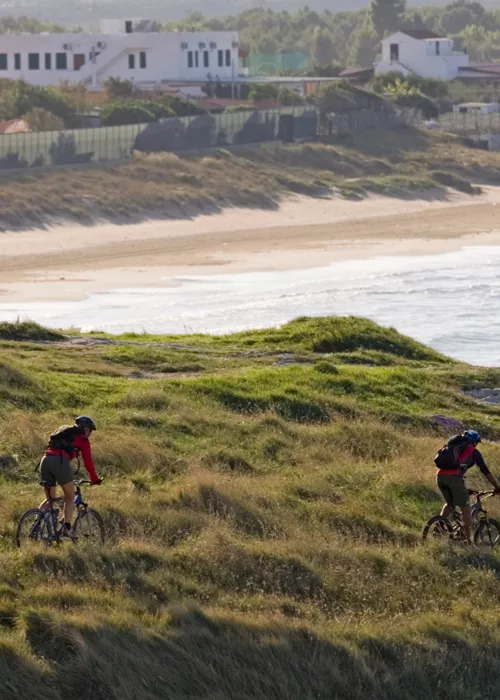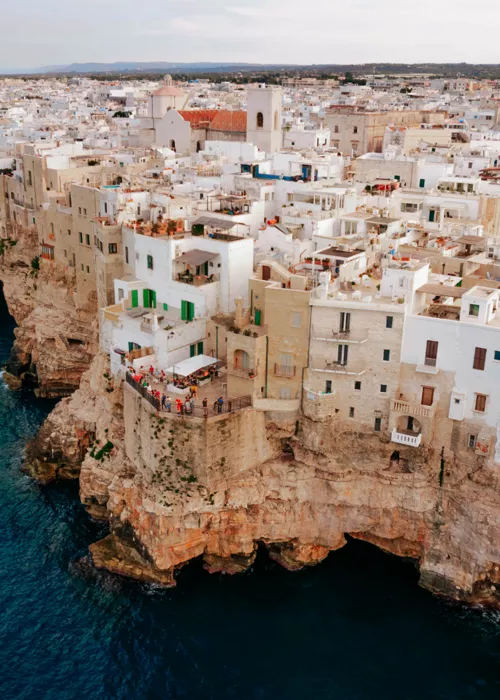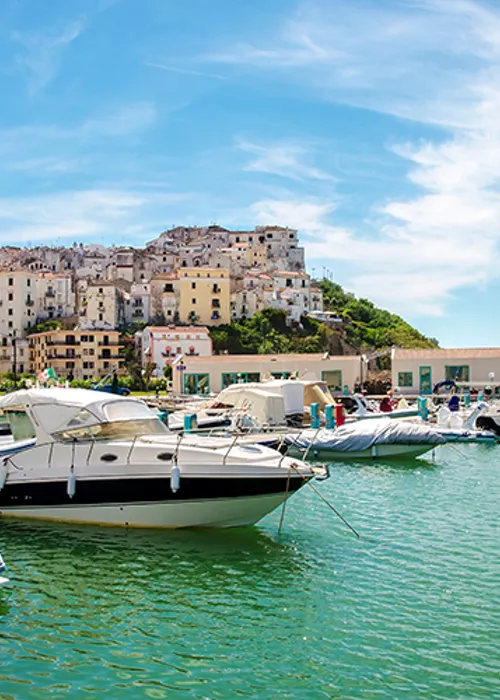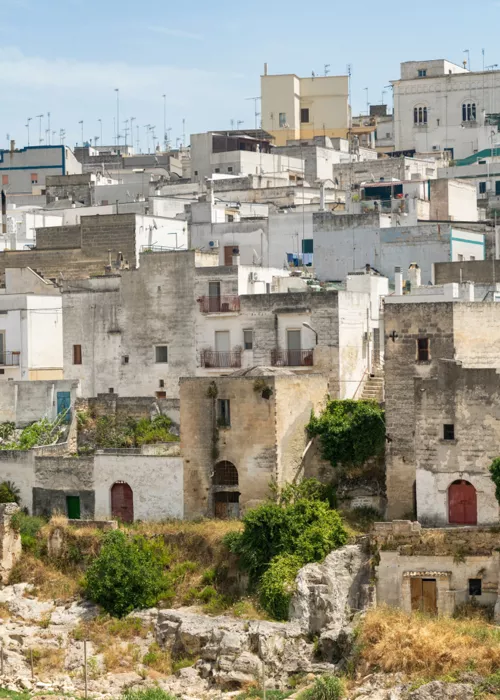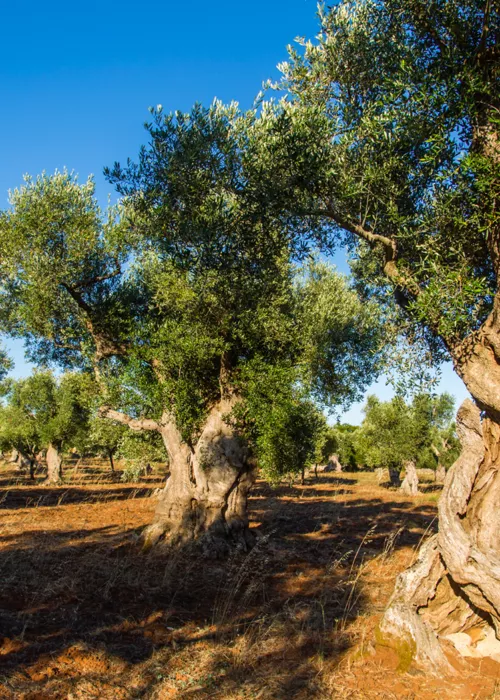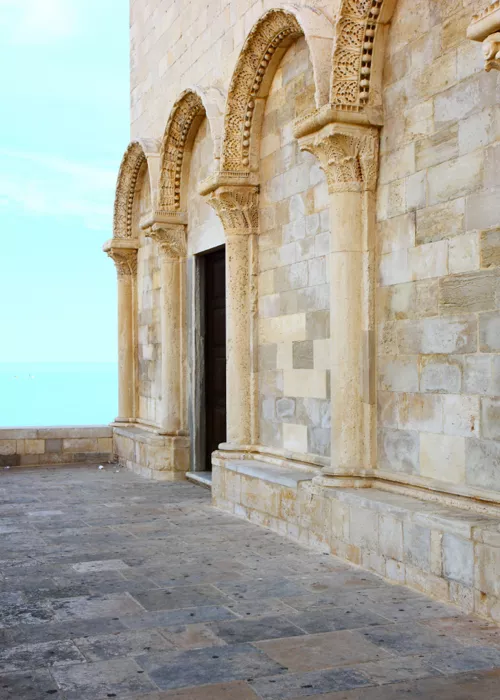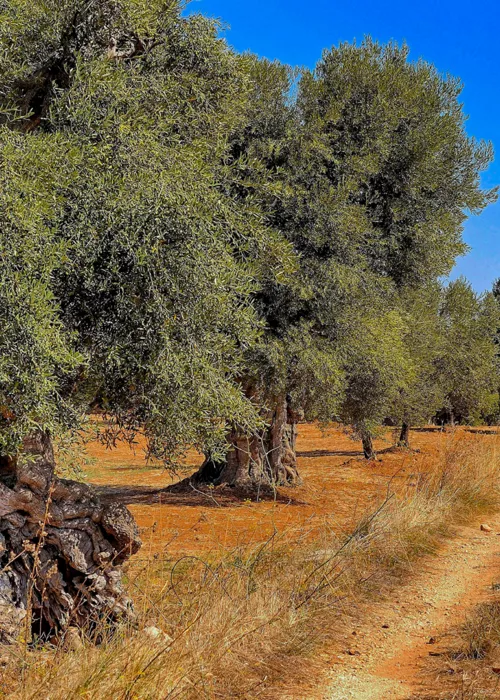Bisceglie

Bisceglie has a particular charm, which stems from its being both a seaside resort and a farming town. It's as closely associated with the harbour and fishing tradition as it is with the fertile countryside that stretches out behind the town, where luxuriant olive groves are interspersed with medieval watchtowers, little country churches and even a few dolmens, testimony to an ancient civilisation. When Frederick took control of Bisceglie, the town was newly-formed and growing. Under the emperor's rule, it continued to thrive. Frederick II left a clear mark on the city's architecture and urban fabric, as can be seen from the two monuments erected during the Norman era, shortly after the middle of the 11th century, and developed under his reign: the co-cathedral of St Peter the Apostle, which stands in the heart of the historic centre, and above all the remains of the castle that once stood at the south-easterly edge of the town centre, unusually distant from the coastline. Frederick, like the Normans, understood the importance of protecting the town first and foremost, as it was then establishing itself as the control centre for the surrounding fertile countryside. At the time of the city's passage to Frederick II, there was only the Torre Maestra, which at 27 metres high is unmistakeable. It was the Swabians, in the first half of the 12th century, who joined it to a castle in its own right, as they incorporated into the new structure the Chapel of St John "in castrum" and erected several other towers, including the Torre Piccola or "delle Gabelle". These towers are also the main elements of the complex, and have been preserved to this day. But the legacy of Frederick II in Bisceglie also includes the Aragonese walls, built by the Spaniards mainly along the perimeter of the walls erected during the emperor's reign. There are also several Norman-Swabian watchtowers, which you can see in the “città extra moenia” (the town outside the walls) and in the surrounding area. They include Torre Gavetinno, St Anthony's Tower and the one named Zappino, which you can admire if you take a short trip out into the countryside before heading to Trani.
Trani

The historic town of Trani is like an open-air museum, with a view of the Adriatic. The narrow alleys are home to many architectural masterpieces, which alternate with the glimpses of life typical of a seaside town, where everything gravitates around the port: a space that in Trani remains central, as picturesque as it is authentic and "lived in". In the days of the Normans and Swabians, Trani as a city was rich, powerful, ambitious and beautiful. Its economic and commercial fortunes came mainly from the Adriatic: not surprisingly, just a stone's throw from the picturesque port, a cathedral and a castle were built. The symbolic monuments of Trani are two masterpieces of medieval architecture which have inspired awe in visitors for 8 centuries. The basilica , which everyone calls San Nicola Pellegrino, but which is officially named after the Assumption, is one of the best examples of Romanesque architecture in Puglia, a picture postcard with views of the blue sea and sky, topped by the elegant profile of the bell tower. Just 200 metres to the west, also on the coastline, is the geometric silhouette of the castle, one of the most evocative fortresses commissioned by Frederick II, who ordered its construction in 1233 and personally supervised the works. On certain midsummer afternoons, when the sun blazes over the still waters of the Adriatic, and the city silently respects the traditional siesta, the scene is a bit like a metaphysical painting. But in winter, when the stormy waves assault the walls, the castle takes on an altogether different, more dramatic charm.
Barletta

For Frederick II, Barletta was a city unlike any other. The king soon began to take an interest in its development, ordering the construction in the year 1205 of the Church of St James on the road to Canne della Battaglia, where Hannibal defeated Rome in the third century BC. In 1224, Frederick gave instructions to extend and reinforce the castle, from where in 1228 he announced the sixth Crusade. On his return, he chose the same fortress to rest, recuperate and reorganise his kingdom. In the meantime, Frederick oversaw the work of the second stage of the construction of the co-cathedral of St Mary Major. It is perhaps unsurprising that a stone bust of Frederick II (apparently the only remaining portrait of the emperor) is closely guarded at the Castle Museum . It was once also home to the Giuseppe De Nittis Art Gallery, another great public museum, now housed in the Marra Building. In Barletta, Frederick II can also count on the company of another illustrious ruler, the Byzantine emperor Theodosius II, represented in a colossal 5th-century bronze statue which the locals have affectionately nicknamed Aré (Heraclius). You'll find him next to the basilica of the Holy Sepulchre, founded in the 11th century by the knights of the same religious order. The statue is further testimony to the close link between Barletta and the Crusades in the Holy Land.
Andria

"Andria is faithful to us down to the marrow" ("Andria fidelis nostris affixa medullis"), we read on the medieval archway namedPorta S. Andrea in Andria, the town that overlooks the hinterland behind Barletta and Trani. The inscription on the door tells us the words that Frederick II himself would have pronounced around the year 1230, when he exempted Andria from all taxes and declared his eternal gratitude for the citizens' loyalty during the Sixth Crusade - unlike many other centres of power which, under the instigation of the pope, had tried to grab the throne during his absence. We could also say that Andria, a loyal city, was also beloved of Frederick II who always retained a connection to it. It was here in April 1228 that his son Conrad IV was born, and in May, at the Cathedral of St Mary of the Assumption the emperor had buried his consort Jolanda di Brienne, who died in childbirth at a very young age. Later, Frederick would also arrange for his third wife, Isabella of England, to be buried in Andria. Legend has it that he even hid his treasure here, scattered among several secret places. But the real treasure that the Stupor mundi left as a gift to this city is the most beautiful and famous of its castles: Castel del Monte, which stands about 15 kilometres south of the town, atop one of the highest plateaus in the Murge.
Castel del Monte

The stone octagon of Castel del Monte dominates the Murgia of Andria from the top of a hill that rises to almost 540 metres above sea level. "Scenic" as an adjective somehow doesn't do it justice! You can spot the castle from miles away. Solid and imposing, with that unusual shape rather like a crown, it symbolises the imperial power of Frederick II and his personal genius - at least if one is to believe those who say that he also designed the building. It seems that Frederick, who died in 1250, did not live to see the castle completed - he probably never had time to stay there either. But this is the castle that more than any other evokes the fascinating figure of Frederick as a cosmopolitan, cultured and charismatic ruler. Its flawless design is awe-inspiring, and makes you think that Frederick II truly deserved the title of Stupor mundi. Thanks to its enigmatic charm, exalted by the surrounding landscape, Castel del Monte has naturally established itself as a symbol not only of Puglia but also of an entire era of history: the Middle Ages of Italy and Europe. It has even earned an entry on the list of Unesco World Heritage Sites.



